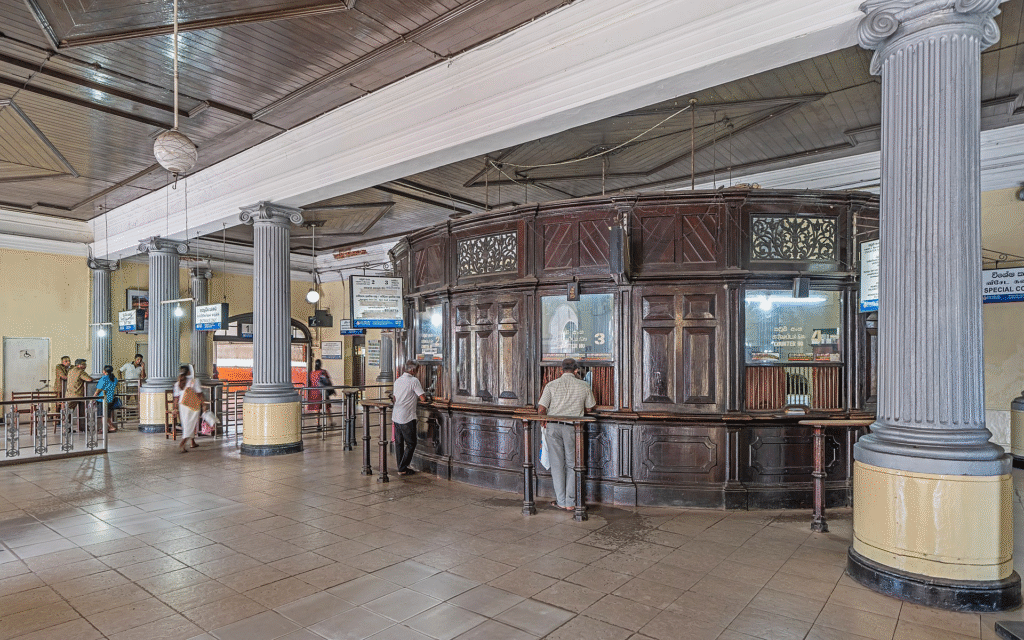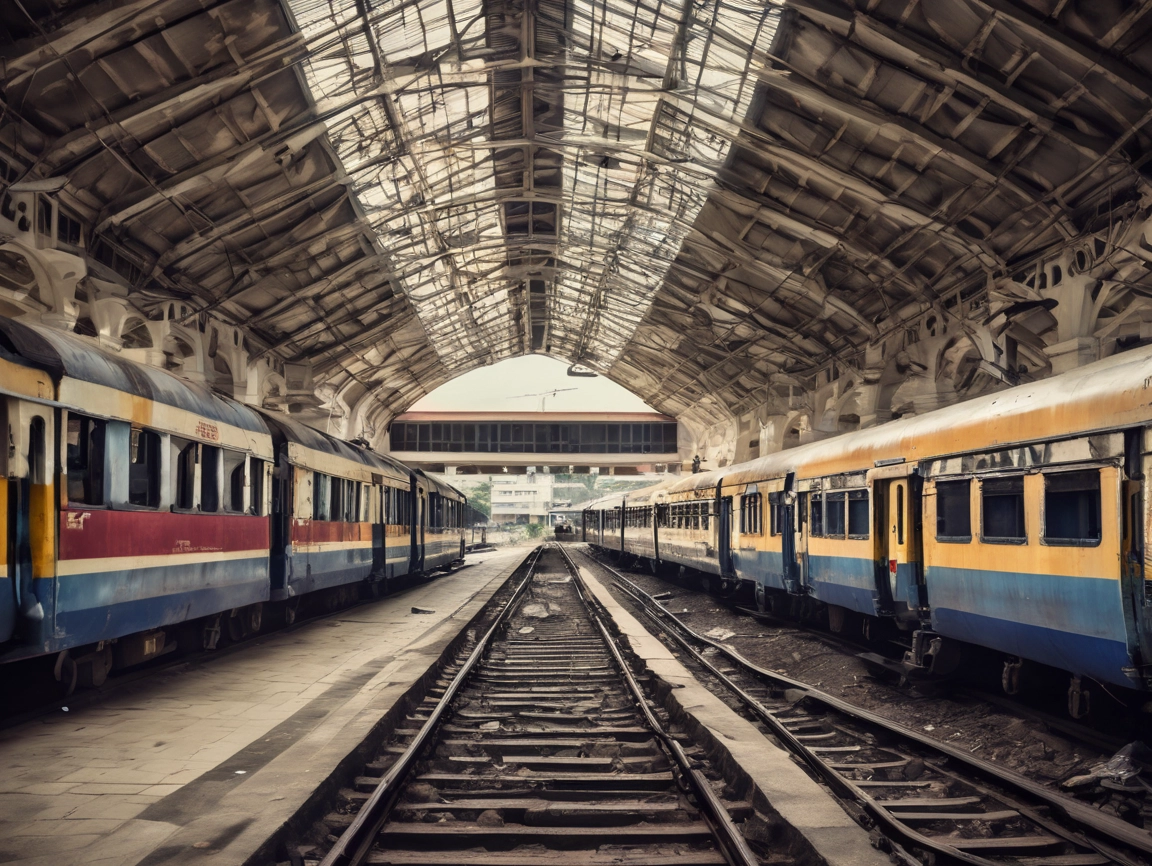Colombo, Sri Lanka — The hum of trains and the bustle of daily commuters at the Maradana Railway Station have long been a familiar rhythm in Sri Lanka’s capital. But today, that rhythm is changing. In a significant move signaling a new era for public infrastructure, President Anura Kumara Dissanayake officially launched the renovation of this historic transport hub, kicking off the government’s ambitious “Dream Destination” program.1
This is no ordinary facelift. The Maradana project, a flagship initiative under the broader “A Thriving Nation – A Beautiful Life” national plan, is the centerpiece of a country-wide effort to transform 100 railway stations into modern, safe, and comfortable spaces.1 It represents a strategic pivot towards revitalizing Sri Lanka’s public transport system, which is a vital artery for both daily life and the nation’s burgeoning tourism industry. With a new administration focused on accountability and reform, this initiative is being hailed as a powerful symbol of progress and a direct response to the public’s call for a better quality of life.

By A.Savin – Own work, FAL, https://commons.wikimedia.org/w/index.php?curid=87210144
The Vision: More Than Just a Station
The “Dream Destination” project, carried out in collaboration with the “Clean Sri Lanka” program, is a massive undertaking with a singular goal: to create a railway network that meets international standards.3 The initiative is not just about aesthetics; it’s about fundamentally improving the user experience, enhancing safety, and ensuring accessibility for all, including passengers with special needs.2 This is a departure from the traditional, state-driven model, as the project is built on a public-private partnership, a testament to the new government’s open call for collaboration from the business community and the public.2
Speaking at the launch, Minister of Transport, Highways, Ports, and Civil Aviation Bimal Rathnayake underscored the significance of the moment, highlighting that past political systems had led to the neglect of railway services.1 The project, therefore, is about more than just infrastructure; it’s about restoring public trust in a system that plays a key role in the daily lives of millions of Sri Lankans and is a cornerstone of the nation’s economic and social fabric.
The scale of the project is immense, with plans to upgrade a hundred stations across the country. The “Dream Destination” initiative officially began its first phase at the Talpe Railway Station, a popular tourist destination in the southern province, on September 2.3 This strategic phased approach demonstrates a clear commitment to delivering on the national promise of a revitalized transport system. As Deputy Minister Dr. Prasanna Gunasena described it, this revitalization is akin to “awakening a sleeping giant,” signaling the government’s firm commitment to transforming public transport into a high-quality service and boosting the country’s development within the next two years.3
Maradana: A Storied Past Meets a Promising Future
Maradana Railway Station is a fitting choice to lead this national charge. It holds a unique and significant place in Sri Lanka’s history, having served as a principal transport hub since its inception in the late 19th century.5 First built as a wooden structure in 1889, it became a central point after operations on the key Kandy and Southern lines outgrew the old Colombo Fort station.5 A permanent building was opened in 1893, with the current structure, a beautiful example of British-style architecture, inaugurated on November 9, 1908.5 As the second-largest railway station in the Colombo District, its renovation is a complex undertaking that must balance the demands of modernization with the imperative of preserving its deep historical and architectural value.1
During the launch event, President Dissanayake and other officials conducted a thorough inspection of the station, including the station master’s office, to understand the current state of affairs and to ensure the project aligns with its core objectives.1 This hands-on approach highlights the new administration’s focus on detail and its commitment to ensuring the project’s success. The modernization is not just about shiny new facilities but about creating a “safe, comfortable, and attractive” space that serves the public effectively.7
The project’s importance is so profound that it extends beyond the physical renovation. During the launch event, a new Sinhala computer font named “Ruhunu Kumari,” unique to the Railway Department, was introduced.1 This small but symbolic gesture reflects the government’s holistic approach to modernization, which integrates technology and national identity into its reform efforts.
A Coordinated Effort for a Connected Nation
The “Dream Destination” project is a public-private partnership, with private stakeholders voluntarily supporting the modernization of railway stations.2 This model is designed to leverage expertise and resources from the private sector to accelerate the pace of development and ensure high standards of quality. The initiative is overseen by the Ministry of Transport, Highways, Ports, and Civil Aviation, which works in tandem with the “Clean Sri Lanka” program to deliver a standardized and sustainable transport system.1
The renovation of the Maradana station, in particular, showcases this collaborative spirit. It is part of a larger, coordinated effort to bring Sri Lanka’s railway network into the 21st century. This effort is complemented by other modernization projects, such as the construction of a new Railway Operation HQ and a high-tech Train Control Centre (TCC) also located at Maradana.8 This separate, but complementary, Rs. 3 billion project, funded by the Asian Development Bank (ADB), aims to improve the efficiency of existing railway operations, address key bottlenecks in the network, and ensure the sustainability of services.8 This new 13-story complex will house the TCC, a state-of-the-art facility designed to manage train movements and signaling to ensure safe and timely operations.8
The fact that these multiple projects—the renovation of stations and the development of a modern control center—are happening concurrently at the same historic location highlights a comprehensive and well-planned strategy. The government is not just making cosmetic improvements; it is investing in the technological and operational backbone of the railway system.
Conclusion: On the Right Track to a Brighter Future
The launch of the Maradana Railway Station renovation is more than a news story; it is a powerful indicator of the strategic direction Sri Lanka is taking under its new leadership. It speaks to a clear commitment to transforming the country’s infrastructure, not merely to stabilize the economy but to improve the daily lives of its citizens. The government’s initiatives, such as the “Dream Destination” program and its focus on public-private partnerships, suggest a willingness to embrace new models of governance and development.
As the restoration work begins on this historic landmark, the project will serve as a continuous reminder of the nation’s journey towards a modern, interconnected, and more prosperous future. The success of this ambitious program will ultimately be measured by its ability to restore public confidence, attract new investment, and, most importantly, provide a safe and comfortable journey for every passenger who steps onto its platforms. The renovation of the Maradana Railway Station is a tangible first step on that promising track, signaling that Sri Lanka is on the right path to building a nation that is both thriving and beautiful.
